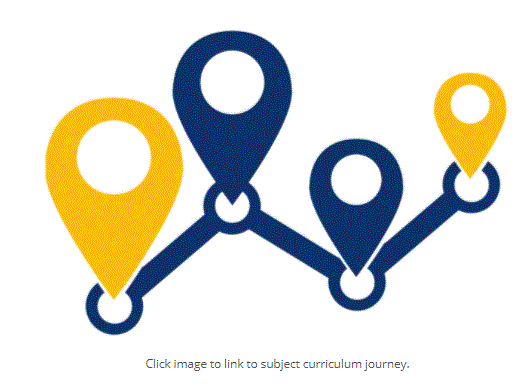We live in a world which depends on our ability to take materials, process them, shape them and create products from them. That is why we believe every student should learn how to design and make.
Throughout the D&T subjects, we aim to deliver a curriculum that develops pupils’ skills as well as their knowledge and understanding. In other words, “Learning by doing”. Pupils will research, design, model and make final pieces alongside formally taught content.
At KS3 we will deliver the broadest possible curriculum before pupils choose to specialize in one or more of our areas at KS4. Where appropriate we will link content to life skills and work-related learning.
By working in two and three dimensions with a variety of materials, ingredients and technologies, we hope to encourage our students to become creative thinkers and designers, to promote independent learning, support problem-solving skills and to enable students to become discriminating consumers.
All of this work is underpinned in Christian values and reflects the schools Christian ethos: “To show love, care and kindness to all in our community. To value what we have and to share with others” and the school prayer: “What does the Lord ask of you? To act justly, to love mercy and to walk humbly with your God”.
We do this by considering the impact of products on individuals, society and the environment. In learning by doing we believe this will motivate our pupils to achieve highly and to show initiative when developing designs. By encouraging creativity, we will encourage our pupils to have the courage to see their designs through. Honest evaluations of ideas, work, and personal skills will enable pupils to develop high-quality outcomes and therefore achieve the best possible grades.
Intent
Each year during KS3 pupils will complete projects in food, textiles, design, graphics and resistant materials. Designing and making will underpin each project, with elements of research, modelling and evaluation supporting the design process. This provides a foundation from which pupils can build on in one or more of our GCSE’s at KS4.
Implementation
Pupils will develop knowledge and skills over time. There will be discrete knowledge in different materials areas and projects, with overlapping concepts such as researching, designing and evaluations that are common to all areas. KS3 assessments reflect the coursework element at KS4 with whole projects being formally assessed and so we assess the whole range of content. Feedback on each project and pupils responses allow pupils to progress further. KS4 assessments are a mix of tests and exams, alongside discrete projects that mirror the coursework element of the subject being studied.
Impact
At the end of KS3, pupils will have experienced a broad curriculum and will have designed and created projects in a variety of materials. This will provide a foundation for pupils who wish to study one or more of our GCSE’s at KS4. They will have researched into a variety of designers, learnt about the properties of a variety of materials and ingredients, evaluated a range of products, designed in textiles, graphics, food, resistant materials and electrical circuits and will have made products using a wide range of traditional equipment, skills and modern technologies.
KS3 Carousel of Projects
During KS3, pupils will experience three textiles based projects. In Year 7 pupils make a textiles piece based on the theme of marine life following our ‘Discovery’ curriculum. After researching into the artist Vincent Scarpace, Emily Knotman, pupils learn about and experiment with the sewing machine, fabric pastels. A final piece is made from upcycled materials using fabrics coloured in different ways and pupils end up with a marine life themed textile picture. In Year 8 new artists are introduced: Lucy Sparrow and Pricilla Jones. The theme for this project is confectionary. The outcome for this project is another fabric image using new techniques including free-motion machine embroidery. KS3 in textiles finishes in Year 9 with birds. This more challenging project includes research into the work of the artists Abby Diamond and Cas Holmes. A wider range of decorative techniques are taught and the most appropriate ones are used with a higher degree of precision and accuracy for a fabric depiction of a bird.
During KS3, pupils will experience three ‘resistant materials’ based projects. In Year 7, pupils learn about safety in a workshop environment. They analyse existing products before designing their trinket boxes. These are made to the pupils’ design specifications and pupils are introduced to an increasing range of equipment such as the drill, sanding machine and laser cutter. In Year 8, pupils make a mechanical toy (‘automata’). A more complex product necessitates more depth and detail in the pupils’ design work. Practical work has to be completed with more precision and accuracy to ensure the mechanism functions as planned. Pupils have free choice as to the ‘toy’ element so have access to an even wider range of equipment including the fret saw, different paints, glue guns, coping saw etc. In Year 9, pupils design and make an adjustable lamp. After evaluating other pupils’ work, they design their own to a high standard and plan out how they will make it. Scientific and mathematical principles are included in this project. Independent making allows pupils to show off their creativity and skills. New equipment for this project includes soldering and the CNC vinyl cutter.
During KS3, pupils will experience at least three hospitality and catering ‘food’ projects. In Year 7 pupils encounter our ‘Discovery’ curriculum where they consider food in space for astronauts and learn about healthy eating. A second food project in Year 7 is themed ‘breakfasts’. In Year 8 pupils consider specialist diets such as vegetarianism. Year 9 it’s the popular ‘World Foods’ (pizza, curry, burgers…!) and ‘Eat like an athlete’ where pupils learn more about nutrients. Students will develop throughout KS3 an understanding that religions, customs and beliefs influence food choice. Know about conditions that may be caused by intolerance or allergy to food. Understand the meaning of ‘cuisine’ in terms of the food-related to the traditional eating habits of certain countries. Learn about the cuisine of other countries as well as British traditional cuisine. Understand how to taste food products using your senses accurately. Know about a range of sensory testing methods. Know which information is legally required for a food label. Explain how this information will help the consumer. Understand how nutritional labelling can be presented. Provide reasoned suggestions for food choice based on a range of factors.
Additional ‘Graphics’ projects underpin the work of all other areas. They add to analysis and research skills, focus heavily on drawing and presentation skills, provide additional challenges with regards to hand-eye co-ordination, construction, precision and accuracy. Graphic products are an integral part of the D&T GCSE, and graphic design can underpin textiles design at GCSE level.
KS4/GCSE
By the end of KS4, pupils studying design and technology will have developed knowledge across a broad range of topics: resistant materials, electronics, systems and control and graphics are all tested in a formal exam. Knowledge and skills are developed in focussed practical tasks, short design and make projects and research into specific topics. In Year 11 pupils will show off their knowledge and skills in an extended coursework project with 50% of the overall grade. Year 10 starts with learning about wood and metal. Pupils learn new ways to cut, shape, join and finish these materials. Computer Aided Design (CAD) plays a large part of the learning. Pupils make an aluminium coat hook, laser-cut trinket box, and cast pewter into a mould cut on a CNC router. After learning about a wide range of manufacturing techniques in industry pupils learn about plastics, particularly thermoplastics which they shape, mould and form into a variety of products. Year 10 finishes with projects in electronics (an automatic night light), programming robots (crumble), modelling different mechanisms (in Knex) as well as learning about textiles and graphics techniques. Year 11 is spent completing a major coursework project where pupils demonstrate their research, designing and modelling skills in a chosen area such as wood and metal, electronics or even programming. The summer exam is worth 50% of the grade.
The national curriculum for Design Technology Key Stage 3 aims to ensure that all pupils:
- understand and apply the principles of nutrition and health
- cook a repertoire of predominantly savoury dishes so that they are able to feed themselves and others a healthy and varied diet
- become competent in a range of cooking techniques (for example, selecting and preparing ingredients; using utensils and electrical equipment; applying heat in different ways; using awareness of taste, texture and smell to decide how to season dishes and combine ingredients; adapting and using their recipes)
- understand the source, seasonality and characteristics of a broad range of ingredients


